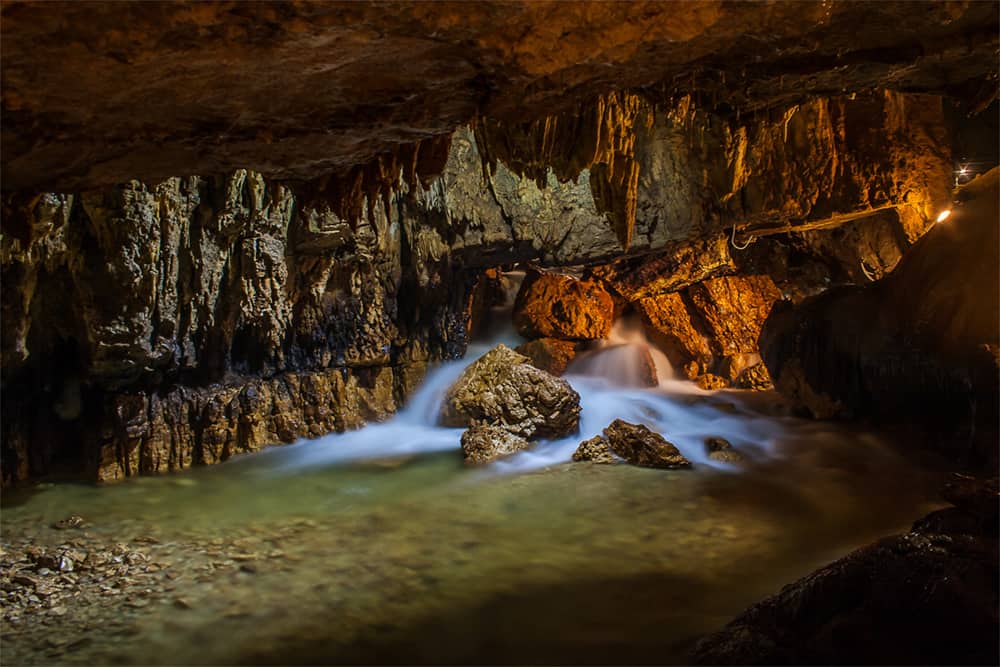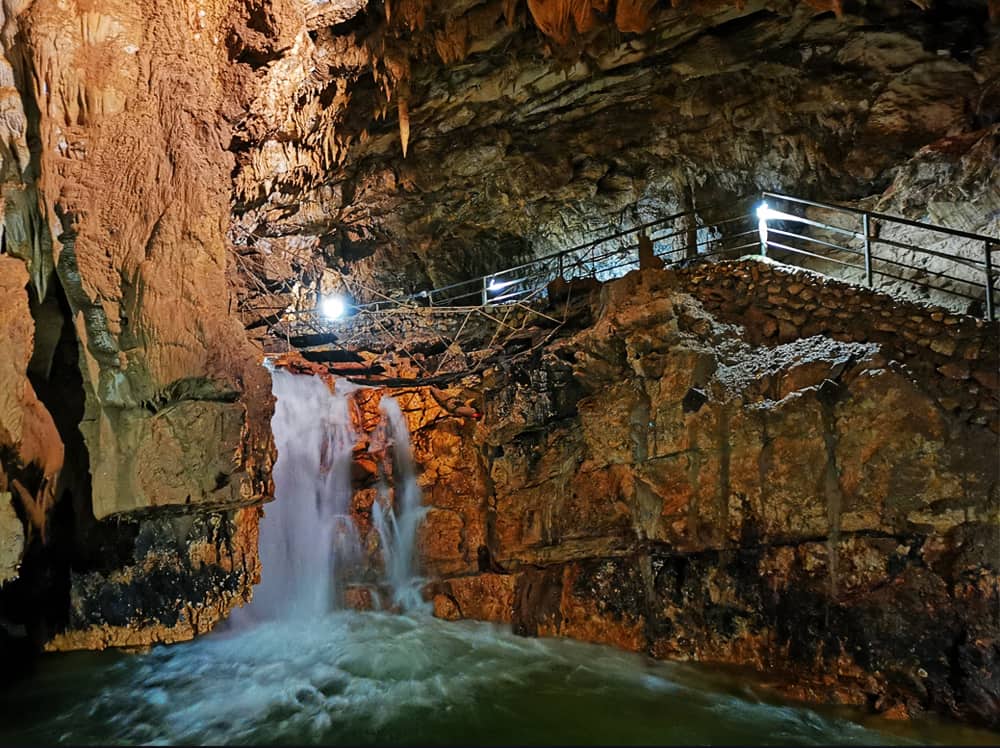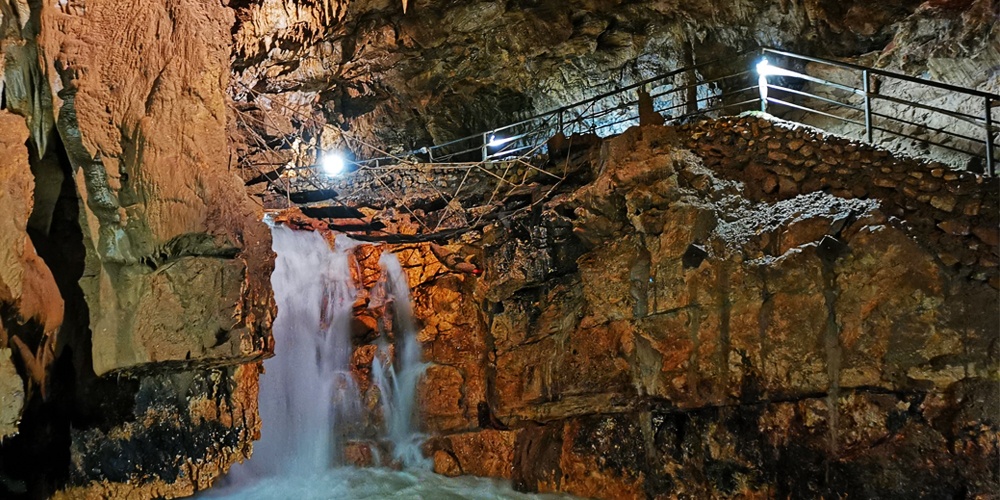In the heart of Abruzzo: the caves of Stiffe

The resurgence of Stiffe has been known for many years by the inhabitants of the place. We are in possession of a large historical documentation, which makes the knowledge of the first environments go back a long way. Just the presence of a copious stream of water inside the cave has allowed, at the beginning of the twentieth century, the construction of a hydroelectric power plant: fed by water transported downstream through a penstock, think that some part is still visible near the entrance, this power plant was a source of energy until its destruction during the Second World War.
The project of tourist enhancement of the cave dates back more than thirty years ago, but only after a process that lasted decades has come to the actual realization of the same in the eighties, even if it is 1991 the inauguration of the Tourist Complex "Grotte di Stiffe".
We are precisely in the municipality of San Demetrio ne' Vestini, and it is in one of its hamlets that Le Grotte di Stiffe are located, exactly at the top of the gorge above the small village of the same name.
Travel inside the caves

Near the cave it is possible to admire one of the most beautiful corners of Abruzzo: on the one hand you can see the placid, soft view of the basin of L'Aquila, dominated by the imposing bulk of the Gran Sasso d'Italia chain, on the other hand it climbs up the rugged rock face one hundred meters high, which overlooks the entrance to the cave, and is lost in the lush vegetation of the gorge, crossed by paths perfectly passable.
Entering the cave we are totally enveloped by an uncommon feeling: the temperature changes with respect to the surface and we are struck by wonderful plays of light, which project us into an archaic dimension of time; thanks to the falling drops we can be spectators of the dripping phenomenon that has given shape to the unusual stalactites and stalagmites; the view focuses on the water that bubbles under the catwalks, and is lost in the distance to capture every detail of the concretions, the river will be one of the main protagonists, its current will accompany visitors all the time, hiding just enough to make you feel the silence, and then reappear in all its power, in a majestic hall where it will flow into a huge waterfall, offering a splendid and disturbing spectacle.
One of the aspects that will immediately capture our curiosity will be the candid white of the walls, characteristic colour of calcareous rocks, which, at a certain height, is abruptly broken by two dark bands that will accompany us along the whole cave: remember that this colouring is due to the presence of metallic oxides that have been deposited by the river in its millenary action.
But beyond the naturalistic interests, the caves have also given us very important archaeological finds. In fact, a little further on, on the left, you can see a small cavity, formed due to the erosive action of the river, here in 1997, was found archaeological material dating back to the Neolithic and Eneolithic period ancient and middle.
Continuing our visit, then, we meet a canyon particularly interesting for the erosive forms present, and, walking along it for a few dozen meters along and across the river, we reach other characteristic places: The Hall of Silence, the hall of concretions, the Black Lake. These are the places that you will meet in this wonderful and so fascinating route that it is waiting only for you.
About the author
Written on 16/04/2020



Alessandro Esotico
The Stiffe Caves are so called because they arise from what geologists call a "resurgence", that is the point where a river comes back to light after an underground stretch; the case of Stiffe is peculiar because this point is located at the apex of the gorge overlooking the small village of the same name.